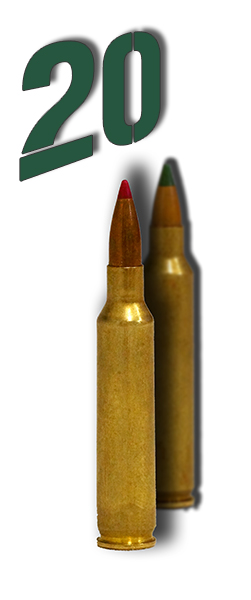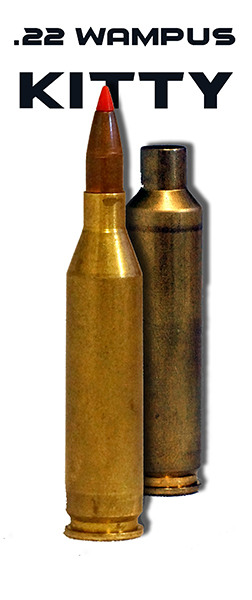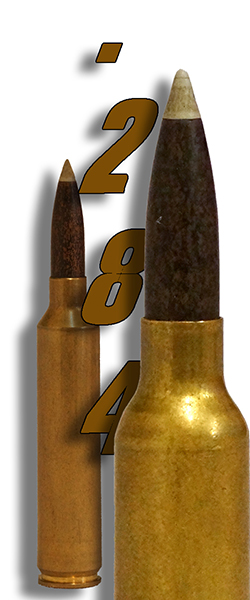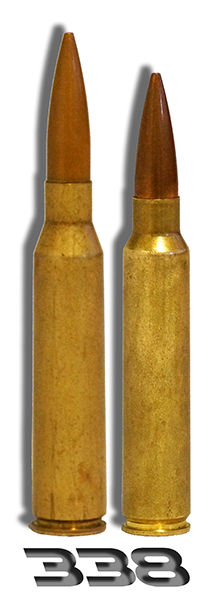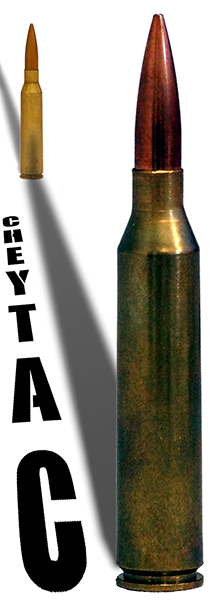Since shooters have had an option of calibres that their rifles are chambered for, there has been an ongoing quest to find the perfect cartridge for a particular style of shooting. Shooters have often believed that they can squeeze extra performance out of a rifle by changing the chambering to better suit their style of shooting. These non-standard cartridges became colloquially known as Wildcats.
There are many examples of good cartridge design and poor cartridge design. Many cartridges are popular because they are well designed and versatile – a 243 can shoot everything from small game to goats and deer. Any rifle manufacturer would be crazy not to chamber it. But while it is good at many styles of shooting, it’s not great at any one particular style of shooting.
While there are plenty of well-known Wildcat chamberings, many of them offer little advantage over their parent cartridges. 243 Ackley Improved (AI) has little advantage over the parent 243 Winchester, and the 7mm Weatherby Magnum (originally a Wildcat cartridge) is not vastly different from the 7mm Remington Magnum. If I get asked for wildcat or specialty chambered rifles nowadays, it’s almost always something wildly different from anything available on the market at the time and it’s always something with incredibly high velocity – the owner of the firearm has a particular job they want to do any they want to squeeze every ounce of performance out of their rifle as they can. Some examples of these cartridges follow.
20 Tactical
This wildcat cartridge is easily formed – pushing a 223 case through the 20 Tactical full length sizing die forms the case, ready for reloading.
While the 204 Ruger uses the 222 Magnum as the parent case, the 20 Tactical uses 223 Remington. So while the 204 Ruger has a short throat section due to magazine restrictions, the 20 Tactical has plenty of room to seat the longer projectiles out of the case. This allows for better alignment of the projectile with the bore and a more efficient case.
If light projectiles are going to be used, such as the 32gr projectiles, there isn’t any advantage to the 20 Tactical over the 204 Ruger. But if you are looking for a calibre that is easy to get good quality brass for, is mild to shoot and inherently accurate, the 20 Tactical is a good choice.
22 Wampus Kitty –
This is a prime example of an absolutely insane cartridge. If the 22-250 hasn’t got enough velocity for you then you need the 22 Wampus Kitty. 22 Wampus kitty cases are formed by necking down a 243 Winchester case (which everyone makes) to take 22 calibre projectiles (front picture), and then blow out to “Ackley” body taper and shoulder angle (rear picture). This is a massive increase in case capacity over any other 22 calibre factory chamberings, and allows for the propelling of even the longest match .224 calibre projectiles at unbelievably fast velocities.
26 Nosler
While this cartridge has been standardised by Nosler, it is still relatively new and has been a point of intrigue for many shooters. Why? Because when it was introduced it was the most powerful .264 calibre cartridge in the world (since beaten by the 6.5/300 Weatherby – a poorly designed case only created for bragging rights).
The 26 Nosler uses the Remington Ultra Magnum parent case, which has no belt, and is able to propel the high ballistic coefficient 6.5 projectiles so fast the bullets have 100” less drop at 1000 yards than a 338 Lapua. It also retains more energy at 1000 yards than a 223 has at 100 yards, owing to the high ballistic coefficient of the projectiles. This is an incredibly powerful cartridge which any long action can be converted to easily.
7mm / 375 Ruger – 28 Nosler
Similar cartridges, the 7mm / 375 Ruger uses 375 Ruger cases and the 28 Nosler the Remington Ultra Magnum case (RUM). So while the rebated rim of the Nosler case (or any case based around the RUM, WSM or RSAUM cases) can have problems with feeding, the 7mm / 375 Ruger is a much better large or dangerous game design. But the 28 Nosler definitely has the velocity edge if you are looking for raw grunt– in fact, the 28 Nosler fires a 175 grain projectile faster than a 7mm Rem Mag fires a 150 grain projectile – this equates to much more energy throughout the trajectory.
So these two cases are similar, but while one has the ballistic edge the other has an ease-of-handling edge. These are the cartridges of choice if you are looking for better-than 7mm STW velocity in a non-belted cartridge that can be used in a shorter action.
338 / 375 Ruger
Another excellent Wildcat based off the Ruger parent case is the 338 / 375 Ruger (pictured on the right, next to a 338 Lapua cartridge). Using the same length action as a 7mm Remington Magnum or 338 Winchester Magnum, the 338 Ruger has almost as much velocity as factory Lapua ammunition, but in a much more affordable package. Forming 375 Ruger cartridges down to 338 is simple, easy and inexpensive and the cartridge does not require the magnum length Lapua actions to fit in the magazine. A great cartridge for long range shooting or large and dangerous game hunting, or both.
338 Cheytac
The 408 Cheytac is the well-known, extreme range cartridge. What isn’t as well known is the 338 version of this cartridge. The 338 Lapua cowers in the shadow of the Cheytac, with the Cheytac using 30 grains more powder and propelling the same projectile 350 feet per second faster – the 338 Cheytac can be shot accurately at targets exceeding 2km. This is an incredibly flat shooting cartridge, but what attracts many people to it is its versatility – while the selection of good hunting projectiles in .375 and .408 is limited, in 338 calibre the hunter is spoilt for choice. While typically 338 caliber rifles are used for larger game, the 338 Cheytac is an excellent medium game cartridge if the right projectile is used – target projectiles have explosive terminal performance on medium size game when driven at the blistering speeds this cartridge is capable of. Most Cheytac calibre rifles are so accurate at long range that they are lots of fun to attempt to hit steel gongs with as well.
The advances in powder technology, projectile technology and barrel steel quality has meant higher velocities are obtainable, better terminal performance at these increased velocities and better barrel life. For these reasons, the benefits of high performance cartridges are increasingly outweighing the drawbacks and high velocity cartridges are becoming increasingly popular as a result.
If you have an idea for a high performance wildcat let me know!
– Zaine Beaton
If you wish to comment or provide feedback on Zaine’s blog you can contact him via the email address – zaine@beatonfirearm.onpressidium.com
This email address is for contacting Zaine in direct relation to blog articles only – not for general correspondence or sales inquiries. For sale inquiries, please visit our Contact Us page
Please keep in mind that these are Zaine’s personal comments – they are not a reflection of the opinions of any other staff or directors of Beaton Firearms.


